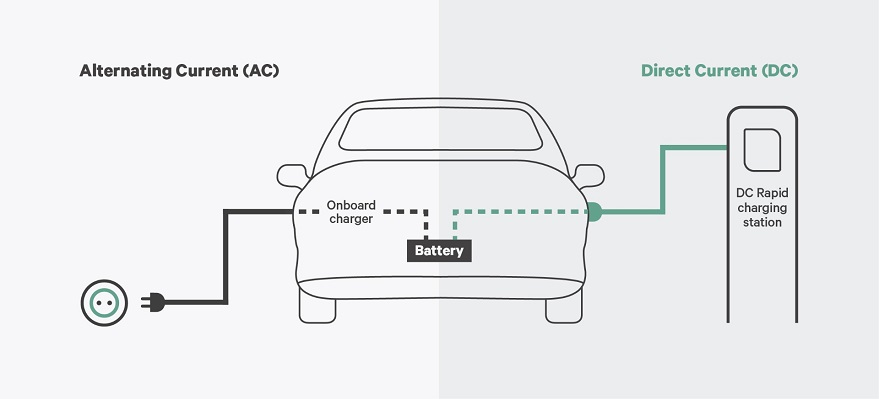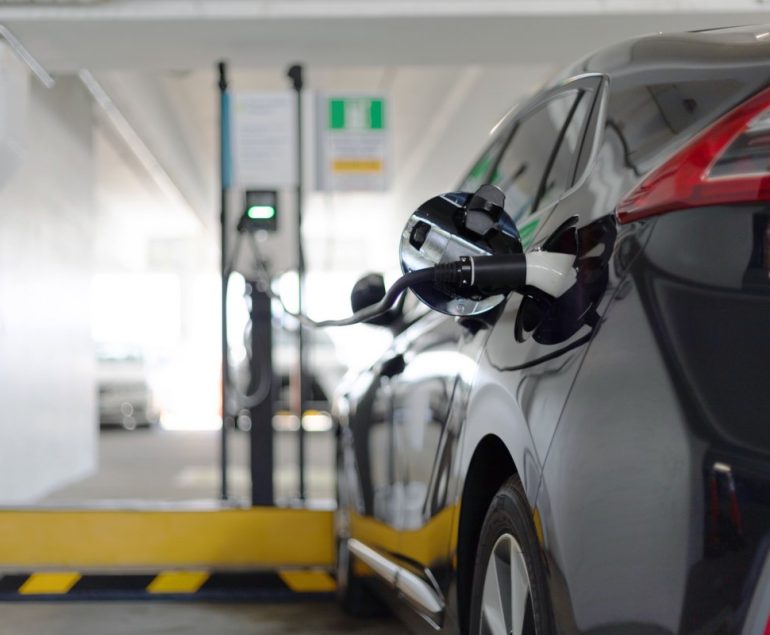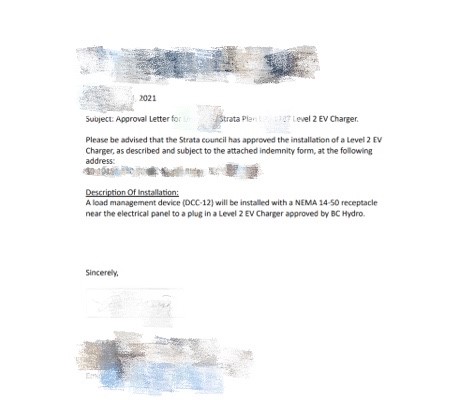German carmaker Volkswagen recently announced an ambitious plan to pull 350 kilowatts of power from electric vehicle batteries, putting it on par with electric energy companies. Volkswagen’s move marks not only the mainstreaming of electric vehicles but also a potential change in the EV business model. Bi-directional charging may become an important feature in evaluating the suitability of electric vehicles.
So, what is bidirectional charging?
The principle
When charging an electric car, alternating current (AC) from the grid is converted to direct current (DC), which is stored in the car battery. This is usually done by an onboard converter in the car. If the energy stored in an EV’s battery is to be used to power a house or send electricity back to the grid, the DC power stored in the car must be extracted and then converted back to AC.
Two-way charging piles can make this energy conversion possible and store energy for emergencies or add solar panels to become a member of the home energy ecosystem.
What is the future?
One of the necessary foundations for the widespread use of bidirectional charging stations is industry regulation and collaboration. While regulations in the industry won’t change overnight, the early success of bi-directional charger adoption on a global scale is encouraging. According to industry reports, there are many important projects focusing on this technology going on around the world.
More than half of these projects are in Europe, such as Octopus Energy Powerloop in the UK. In this program, customers can sign up to install bi-directional chargers and be eligible for discounts and monthly rebates for putting surplus electricity back into the grid.
The outlook for North America is also positive.
Building a two-pronged model of solar and stationary battery storage is now the ground-breaking new energy technology. The solar industry has largely driven regulations for back-feeding power to the grid, and the battery storage industry has pushed regulations for back-feeding power to homes from batteries.
Once the regulations are settled, the final element is the hardware that makes them work together. Chargers from manufacturers such as Princeton Power already have this capability. Bi-directional chargers like Wallbox Quasar, which will be launched this year, are the first to receive UL certification.
However, these early bi-directional chargers were bulky and expensive, so they are not consumer products. The future direction is smaller and more affordable products, tailored for different regions and markets.
What determines the future?
- Car and battery manufacturers need to develop more products capable of bidirectional charging
- The charging and energy industries require stringent regulations to provide standardized business models
- Charger manufacturers need to develop safer, easier-to-operate bidirectional charging technology



